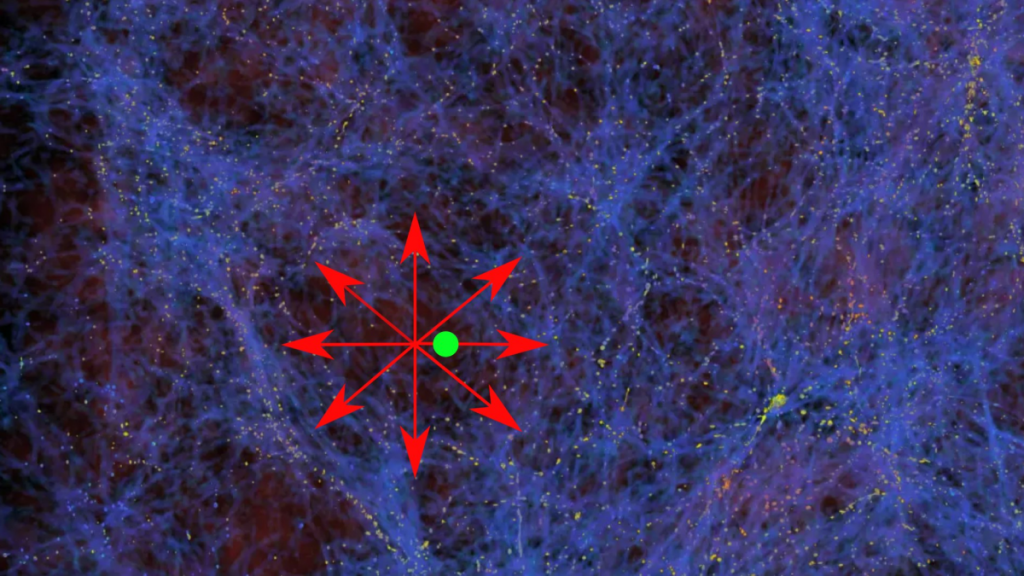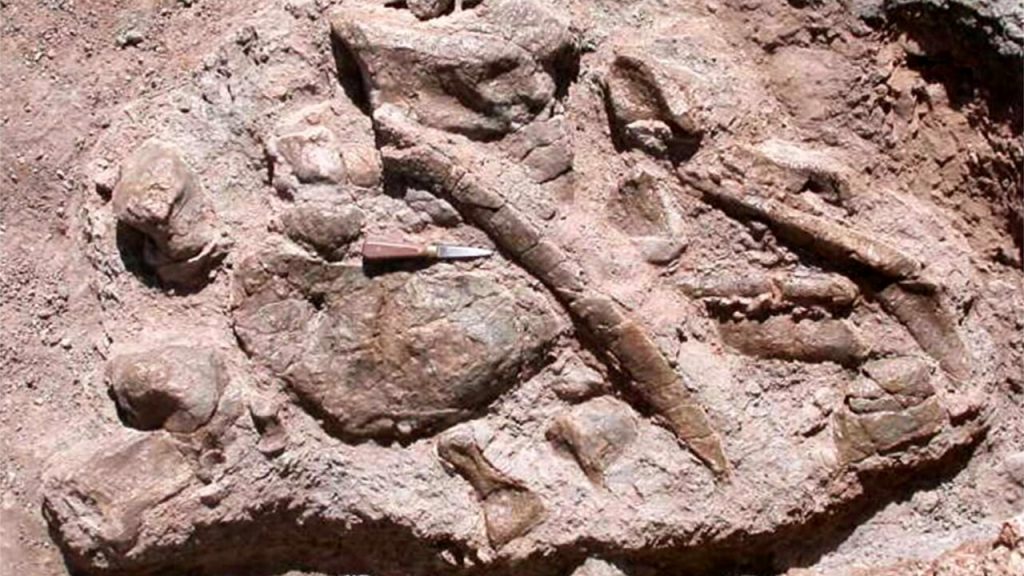When Tyrannosaurus dominated the Upper Cretaceous period, about 70 million years ago, specimens of Tazodasaurus had already been fossilized for 110 million years. The fossil remains of a specimen of Tazoudasaurus naimi measuring about 9 meters long represent an ancient testimony of invaluable value to paleontology which will be on display from December 8 to the enthusiastic and spectating public among the 250 original finds of the exhibition “The Lost Barn: Dinosaurs”. Created by Venice Exhibition Srl in the 5,000 square meter exhibition space in Pavilion 1 of the Padua Fair, the Paleontological Expo represents the largest temporary collection of dinosaur fossils in Italy. To announce the presence of the rare Tazoudasaurus naimi, as part of the impressive exhibition event sponsored by the Municipality of Padua, is the curator of the scientific exhibition designed for an audience of families, school groups and also for enthusiasts of the subject, Ilario de Bias.
Ilario de Biasi
“Astronomical time separates us from the Lower Jurassic period 180 million years ago – explains de Biaz – the period in which Tazoudasaurus naimi lived, when North Africa and the Americas were still fused together to form one large continent. The uniqueness of its discovery lies in all parts of the world – adds the curator – in the fact that the continental sediments of that ancient period between 199 and 176 million years ago were found only in a few places on Earth. As a result, very little is known about the history of the dinosaurs that lived during this period.
exhibition
The exhibition “The Lost Barn: Dinosaur Reveals” develops an itinerary of more than 500 objects from paleontology, ethnography, archeology, zoology, and astronomy, and will also provide an opportunity to reflect on humanity’s colonization of the planet and its chances of survival. In fact, the finale of the exhibition will analyze the two most approved hypotheses about the mass extinction of dinosaurs in the Mesozoic Era, which indicates the transition to the Cenozoic Era, the age of mammals. «The asteroid hypothesis will find prestige – confirms de Biaz – thanks to the exhibition of a group of 50 Italian meteorites. Some specimens of volcanic origin will serve as an analogue in reference to Deccan Traps. The intention is to show the visitor the multiplicity of factors that determine biological transformation.” Extinction is a recurring event in the natural history of life: disaster for some groups of animals and opportunity for others. Among the questions that will arise when visiting the exhibition: How did the earth recover from this extinction? How did he bring it back to life? Lost Barn: Dinosaurs Unearthed will also invite two reflections on the fate of the human race, which is in danger of extinction due to the potential use of nuclear weapons, and what the world of “dinosaurs” might have been like if the dinosaurs had not gone extinct. «Among the guides who will lead the visitors, there will be experts in paleontology – announced from the Venice Gallery Srl – who make up a scientific committee of Italian researchers active in foreign institutes and research centers in paleontology. The international exhibition targets school groups at all levels because it is structured like a prehistoric atlas of high educational value that will certainly not fail to excite lovers of the giants of the past for its scientific nature and completeness of information ». The “Lost Barn, Dinosaurs” exhibit will change the visitor’s perception of these “terrible lizards” thanks to an unprecedented collection of original dinosaur fossils brought together for the first time, supported by animated reconstructions of giant animals, animation on a 1:1 scale, ultra-realistic in detail and motion, for use in photography. The space of Pavilion 1 of the Padua Gallery will also be dedicated to 5 paleoart installations for self-portraits signed by the artists. Finally, from an educational point of view, the exhibition will also consist of 50 virtual reality stations to allow visitors to relive the most important prehistoric experiences experienced by dinosaurs in the 180 million years of their appearance on Earth.
Jordanians
“Scientific publishing – started by the mayor of Padua, Sergio Giordani – in a city like Padua that has ancient roots in this field, thanks also to our university, and is a key element of the cultural policies of our administration. This exhibition, which can be visited at the exhibition for a good six months, is easy Exactly in this direction and it is particularly important because it treats the popular and fascinating subject of dinosaurs with scientific rigor, proposed with an approach that would also be accessible to the general public, using, for example, modern animation techniques at a scale of 1: 1, which makes the visit particularly spectacular. The fair also fits perfectly into the new strategic plan of the fair, which sees the large spaces of the exhibition center become an open space for the city, not only for trade fairs in the strict sense but also for many other events.The fair becomes a place for research, exchange of knowledge with a congress center, and a competency center for a college engineering, but also a place for entertainment and social communication under the motto of quality and culture ».
Prisa
“There will certainly be thousands of people, including families, schools and individual visitors, who will appreciate this interesting exhibition dedicated to dinosaurs – adds Production Activities and Events Consultant Antonio Prisa – an evergreen theme, but presented with such science. And an informative approach at the same time, it will surprise even the most astute visitor. We chose a different stage, compared to the usual venues for exhibitions, also because the exhibition is easily accessible by train and has ample parking, factors that will facilitate the attraction of the many tourists who will come to Padua precisely by the dinosaurs. Moreover, as the mayor has already emphasized, it is a first step towards turning the fair into an open area that can be used constantly by paduans and tourists, a real new square in the city and no longer a place where only a few days of the year live on the occasion of trade fairs ».
reds
«The new strategic plan – explains the President of the Padova Hall, Nicola Rossi, – will make the exhibition center an innovation zone open to multifunctionality with a calendar that combines medical-scientific exhibitions and conferences with large exhibitions and cultural events. Here’s the Barn of Lost, Found Dinosaurs, a unique initiative we are proud to host that will bring thousands of families to Padua Hall, is heading in precisely that direction.”
fossil
When the fossil of Tazoudasaurus naimi was found in Morocco in 2004 it was lying on its right side, inside a pocket of mud and sandstone. It appeared in excavations in Tazouda, a village in the eastern High Atlas from which the fossil took its main name, which was completed by ‘saurus’ which means lizard in Latin, while the appellation ‘naimi’ is derived from the Arabic word meaning ‘thin’ in reference to The small size of this dinosaur. The excavations confirmed the importance of the Tazoda site, where nearly 600 dinosaur bones were found, in addition to parts of a skull and jaw with 17 teeth. Paleontologists consider Tazoudasaurus to be representative of the volcanids, a group of very primitive sauropods thought to be the ancestors of most later sauropods.

“Internet trailblazer. Travelaholic. Passionate social media evangelist. Tv advocate.”







More Stories
A possible explanation for one of cosmology's greatest mysteries has arrived
From Earth to the Moon at the speed of light: Watch the chilling video
Watch what the planets were like 3.8 billion years ago, video (chilling reconstruction)